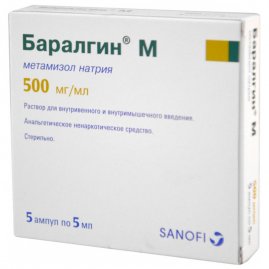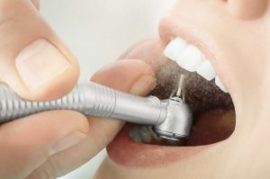Why does tooth pain appear after filling?
Often, after a visit to the dentist, patients complain that a sealed tooth hurts. Filling helps to treat the disease with the help of special dental materials and restore the anatomy of the tooth. But when after tooth treatment it’s very painful to press it, then it’s serious reason to see a doctor. And although this will bring new pain, the problem will be finally solved.
Content
How is this physiologically explained?
From a physiological point of view, if after treating a tooth, the dentist hurts when pressed, this is perfectly acceptable. This process is called a post-filling reaction, and after medical intervention in the early days it is natural.
When treating the carious cavity, doctors perform the following work:
- with the help of a drill make the dental canal wider;
- dry surfaces;
- eliminate damaged tissue;
- adhesive material strips affected areas;
- put a dental pad;
- fill the cavity;
- customize and grind the seal.
This is a standard process in the treatment of uncomplicated caries. All these procedures are quite aggressive and lead to traumatic injuries. Often you can feel the filling protruding above the tooth: this is the answer to the question of why the cured tooth hurts after filling with pressure and reacts sharply to the cold.
Many patients may encounter such phenomena, because when treating a tooth, nerve endings are damaged. In such cases, the tooth very often hurts when pressed after filling. These sensations are rather unpleasant and long in term.
If depulpation is necessary, in which the nerve is removed under local anesthesia, the canal is cleaned and filled, then the pain when pressed will be stronger and last longer. The tooth will respond to cold and hot, because soft tissues are damaged, and their restoration will take some time.
But the reaction to the filling should not last long; there is a period beyond which it is necessary to consult a doctor.
It is recommended to visit the dentist again if the tooth with the filling is sore with light pressure for more than ten days. This is the maximum time even for people with hypersensitivity. Typically, such soreness disappears after three to four days.
If the canals were healed, then the tooth can ache up to fourteen days. With this method of treatment, this is normal. Doctors recommend the use of medications to relieve pain. You need to eat soft food, drink warm drinks and water, remove from the diet everything that can irritate and provoke pain when pressed.
It is urgent to visit a doctor in the following cases:
- it is very painful to press the tooth after the filling, sharp and sharp pain sensations appear that may be pulsating in nature and do not pass, but rather intensify;
- pain extends to the ear, neck, head;
- temperature rises;
- swelling of the face on the side of the filled tooth;
- gums become inflamed and redden near the area that was filled;
- the syndrome lasts more than fourteen days, and severe pain lasts more than two days;
- the seal protrudes and interferes, it is painful to press on it.
Such signs suggest that this is not a normal physiological process, but a pathology, so you should definitely visit the dentist: this will help answer the question of why the tooth under the filling hurts when pressed and pressed and reacts sharply to cold and hot.
If the syndrome is strong and interferes with normal life, then you do not need to wait two weeks, and visit the dentist immediately.
In addition to the post-filling syndrome, there are other reasons that lead to pain in the teeth when pressed or eating.
Pain after caries treatment
After the tooth is filled, pain may appear in the following cases:
- The doctor set the seal too high. In such cases, the dental bite is somewhat impaired, the cured tooth has increased mechanical pressure when eating, so pain occurs and a section protruding above the other surface is felt. This problem can easily be fixed by a dentist who, by grinding, will reduce the filling and make it suitable in size. It is not recommended to do this on your own, the more so wait until the sealed area is erased.
- Pulp damage during treatment. In order for the filling material to harden faster, the dentist uses a photopolymer lighting device. If the hardening procedure took too long, burns and damage to the pulp are possible. After that, it is painful to press the tooth, the syndrome is not eliminated even after the use of analgesics.
- Somehow penetrated the healed area acid or alkali.
- Stress after applying polymer materials. They can sit down with the formation of gaps in which pathogenic microbes with food can enter. The result of this may be the occurrence of an inflammatory process, which leads to the fact that after the installation of the filling, the tooth hurts when pressed.
- When incorrectly carious area. Such a mistake will lead to the fact that you can get secondary caries. In such cases, the syndrome does not appear immediately, but after a certain time.
- Incorrect diagnosis. Dentists may make the mistake of deciding that the patient has only tooth decay. In order to make sure that there is another disease, you need to take an x-ray that can reveal pulpitis, for its treatment it will be necessary to remove the affected tissue. With this disease, acute pain often occurs, requiring urgent treatment by a dentist.
Pain after depulpation
If caries is not treated, chronic pulpitis may occur requiring depulpation. In such cases, the doctor removes the pulp, which is inflamed, cleans the canals and closes them with filling agents. Such treatment guarantees the elimination of the problem, a small pain syndrome may bother the patient for some time, but this will pass in two weeks.
If, after tooth treatment, the tooth hurts badly when pressed even after two weeks, then the reasons for this are as follows:
- A foreign object has entered the channel that the dentist was treating. This sometimes happens when particles of a medical instrument fall into the affected area during treatment, this leads to pain during pressure and chewing.
- During treatment, the walls of the tooth root were affected, this is called perforation. In order to clarify, it is necessary to remove the tooth by x-ray.
- Filling material is not placed on the entire surface of the channel.
- carious foci have not been completely removed, so a sealed tooth hurts with a little pressure.
All of the above are dentist errors that require a visit to the doctor to address these causes.
With a common complaint, "he cured the tooth, and it hurts," you do not need to endure for a long time, but consult a specialist to prevent dangerous complications.
How much tooth can hurt after filling the canals
Here is a case from a dentist.A nerve was removed to the patient without an X-ray, since the X-ray room was closed. Three days later, we cleaned out all the excess from the canals and put a temporary seal, after making sure from the picture taken that everything was healed as it should, and you can install it. After a day, a temporary seal was replaced with a permanent one.
After some time, the patient felt that the tooth with the filling was sore with pressure, and later these feelings became stronger, the sealed area became hypersensitive. After consulting the dentist, the patient was polished, because it was installed slightly higher than the rest of the teeth. This was a causal sign that a seal was placed, and the tooth hurts when pressed. After the tooth was leveled with the others, all the unpleasant sensations completely disappeared.
What to do with pressure pain?
For pain with pressure and chewing, you should see your doctor in order to clarify the diagnosis. The dentist can remove the filling and completely cure the tooth. Self-treatment is not worth it, this can lead to tooth loss.
In order to alleviate the condition before going to the doctor, you can take the following measures:
 drink a strong analgesic (Baralgin, Sedalgin, etc.);
drink a strong analgesic (Baralgin, Sedalgin, etc.);- periodically rinse the oral cavity with a solution of soda and sodium chloride. A spoonful of salt is taken on a spoonful of soda and everything is dissolved in water. You can drip a few drops of iodine for a better effect;
- dissolve a spoonful of soda in warm water and rinse a aching tooth;
- apply sea buckthorn oil to a tampon and apply to a sore spot for five minutes;
- attach gauze to the diseased area, on which several drops of fir oil (quite six drops) were previously dripped. It is necessary to apply a gauze swab directly to the tooth, avoiding oil getting on the gum, as this can lead to burns.
You should not drink a lot of analgesics to relieve pain, if the syndrome is too pronounced, then a visit to the dentist is the best way out.
Help at home without pain medication
 If for some reason strong painkillers are contraindicated, then alternative methods can be used to relieve pain and relieve inflammation. This should only be done in conjunction with the therapy prescribed by the doctor, but not in her place.
If for some reason strong painkillers are contraindicated, then alternative methods can be used to relieve pain and relieve inflammation. This should only be done in conjunction with the therapy prescribed by the doctor, but not in her place.
A popular folk remedy - sage, which is produced at pharmacological plants or collected independently, will help cope with pain when pressed.
- A tablespoon of purchased or collected medicine should be filled with 200 g of boiling water.
- Place dishes with sage in a water bath and simmer for ten minutes over low heat.
- Remove from heat, cool and strain.
- Rinse the mouth with a decoction several times a day.
Prevention of pain after filling
After installing the dental filling, it is recommended to follow the rules that will prevent the occurrence of pain. To do this:
- Limit or nullify smoking.
- Do not eat a lot of sweets.
- Eat only in a warm form, giving up excessively cold and hot foods.
- After installing the seal, there is only soft or mashed food that does not need to be bitten and chewed, this will make chewing sparing.
- Try not to use the sealed side when chewing, this will allow less load on such teeth, and discomfort will not appear.
In case of pain under the filling, if you press hard and press on the affected area, you need to know what measures should be taken to alleviate the condition. This in no way cancels a visit to a dentist who will quickly solve such a problem as a recently sealed tooth hurts when chewing and pressing.






